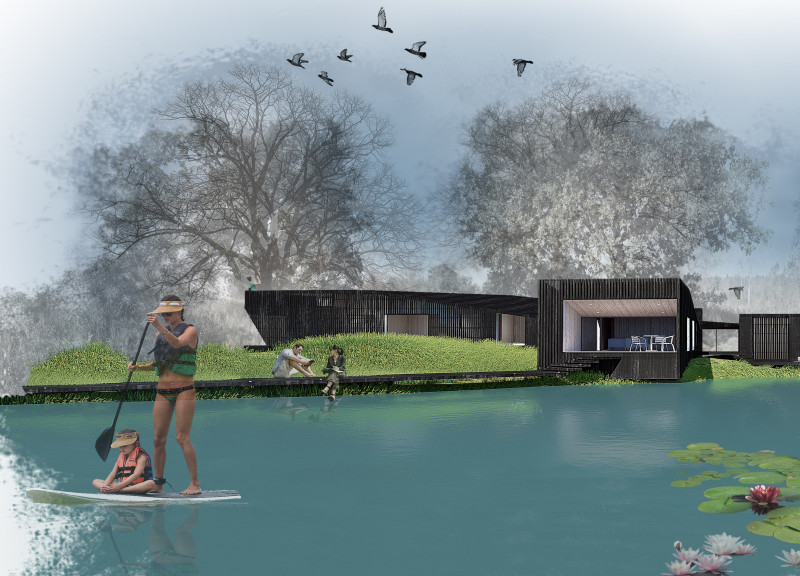5 key facts about this project
The building is characterized by its thoughtful layout, maximizing the use of space while promoting a sense of openness and connectivity. The exterior displays a blend of modern materials, such as reinforced concrete, glass, and metal siding, which combine to create a harmonious but striking façade. The choice of materials not only emphasizes the building’s modernist approach but also ensures durability and minimal maintenance over time. Glazing elements strategically situated on the façades allow natural light to permeate the interior spaces, enhancing the overall ambiance while reducing dependency on artificial lighting.
Inside, the architectural design prioritizes functionality and flexibility. Open-plan spaces encourage collaboration and fluid movement, tailored to the project's specific function. Whether this involves office spaces, educational facilities, or community areas, the design accommodates various user activities. Distinct zones within the building are defined through subtle architectural features, such as variations in ceiling heights or changes in the floor material, contributing to an overall sense of organization without compromising the open feel.
Particular attention has been paid to the integration of outdoor spaces with indoor areas, reflecting a growing trend in architecture that blurs the lines between inside and outside environments. This is evident in the inclusion of terraces and balconies that serve as transitional zones, promoting interaction with the natural surroundings. These elements are carefully designed to enhance the user experience, providing areas for relaxation, social engagement, and interaction with nature.
A unique aspect of the design is its commitment to sustainability and eco-friendliness. The architects have incorporated features such as green roofs, rainwater harvesting systems, and energy-efficient systems that contribute to a reduced ecological footprint. Moreover, the building orientation is meticulously planned to maximize passive solar heating and ventilation, promoting energy efficiency and occupant comfort throughout the year.
In terms of architectural ideas, the project reflects a profound understanding of the local context, incorporating elements that resonate with the community's historical and cultural narratives. The design fosters a sense of belonging and place, inviting users to engage with both the structure and the surrounding environment. The structural system further enhances this ethos, showcasing an innovative approach that respects traditional architectural principles while embracing modern advancements.
As you consider the intricate details and thoughtful design elements present in this architectural project, you are encouraged to explore further. Delve into the architectural plans, sections, and designs that underscore the comprehensive nature of this project. Each element has been meticulously crafted to ensure that the outcomes not only meet functional needs but also provide a sense of identity and connection for its users. Understanding these nuances will enrich your appreciation of modern architecture and its potential to shape the spaces we inhabit.


























